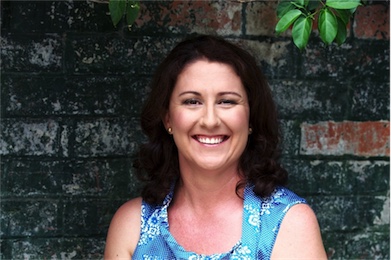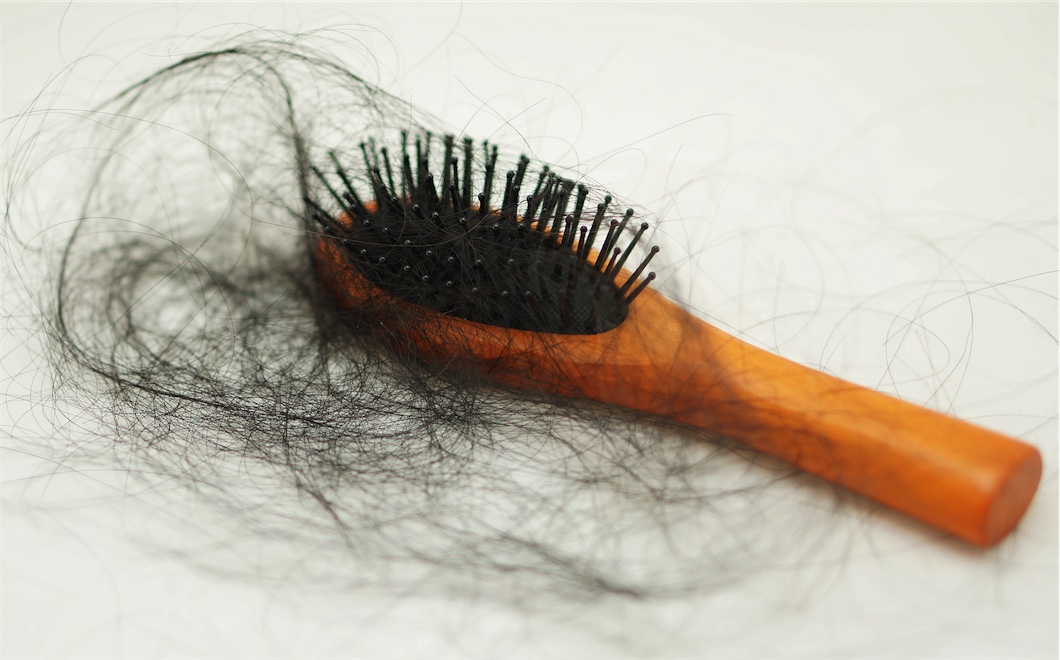Is your hair clogging your shower drain or filling up your hair brush? Is the hair on top of your head thin enough to see your scalp through?
Although not often openly discussed, hair loss affects up to 50% of women at some point in their life. Female hair loss can be distressing and demoralising. The social isolation many women experience with this condition may contribute to depression and anxiety.
The causes of hair loss are many and varied so you’ll need to be prepared to do a little detective work to determine why it’s happening and what you can do about it.
Hair is second fastest growing tissue in body, so it’s ideally placed to be the canary in the coal mine giving us warning of other not so great things going on.1
How does your hair grow?
To understand hair loss and the challenges of reversing it, a brief overview of the three phases of hair growth will be useful.
Anagen – growing phase
Of the 100,000 hairs on your scalp, 90% are termed anagen or growing. These are between 3-7 years old and are anchored deep in the skin of your scalp. They can’t be pulled out easily, and it will hurt if they do. How long your hair grows is determined by the length of your anagen phase.
Catagen – transitional phase
During this phase lasting around 10-14 days, growth stops and the follicle detaches itself from where it was anchored deep in the scalp.
Telogen – resting phase
Hair in the telogen phase is static and remains this way for about three months until it falls out. Telogen hairs sit closer to the surface and are easily pulled out with brushing or washing. It is normal to shed between 25-100 telogen hairs a day. 2
There are two main classifications of female hair loss: female pattern hair loss and diffuse hair loss.
Female pattern hair loss
This type of hair loss is characterised by thinning hair over the crown and scalp. The front hairline usually remains intact. The initial stages can be noticed by a widening of the central part. 3
Female pattern hair loss is a gradual process and occurs over many months to years. It is due to the actions of androgens on the hair follicle. Androgens cause the follicles to shrink in diameter, and they progressively become fine “vellus” hairs. More of the follicles are in the telogen (shedding) phase, and less are in the anagen phase. Eventually, bald patches will appear.4
Not all women will with female pattern hair loss show high levels of testosterone on a blood test. However, hormones are all about relationships to each other, and many women with this type of hair loss will have a relative excess of androgens to their other hormones.5
What drives excess androgens?
The biggest culprit with excess androgens is consistently elevated insulin.6 High insulin causes ovaries to produce androgens instead of oestrogen. Insulin also decreases the production of sex hormone binding globin (SHBG). 7 SHBG binds hormones and makes them inactive. Low SHBG means you have more free or active testosterone in circulation to act on hair follicles. Women who have polycystic ovarian syndrome (PCOS) may experience this kind of hair loss.8 It’s important to remember you can have a normal fasting blood glucose result and still have high insulin. The elevated insulin is what’s keeping the blood glucose appear healthy. Sustained levels of high insulin eventually cause your cells to become resistant to it and your pancreas to produce less. This is the path to developing diabetes.
What’s the best way to reduce high insulin? Reduce consumption of refined carbohydrates and sweeteners containing fructose, exercise regularly and maintain a healthy weight.
Birth control pills and female hair loss
Some forms of hormonal contraception include synthetic progesterone called progestins. Progestins are very similar to androgens. These include medroxyprogesterone, levonorgestrel, norgestrel, and etonogestre. If your current contraception contains these progestins, you may what to discuss with your doctor about swapping to one with a low androgen index.
Menopause and female hair loss
After menopause, a woman is no longer producing oestrogen and progesterone from her ovaries. Progesterone is especially good for hair as it is a hormonal anti-androgen. While there is a smaller amount of oestrogen and progesterone produced by the adrenal glands overall, there may be a relative excess of testosterone. Up to 50% of postmenopausal women will experience hair loss. Sustained stress is driving factor as adrenal hormone production decreases with stress (physical/psychological or nutritional). The adrenal glands prioritise the production of stress coping hormones over everything else. The principal stress regulating hormone cortisol has the same starting ingredient as progesterone. Diet and lifestyle can be of benefit here with phytoestrogens and stress reduction techniques supporting healthy hormonal balance.
Inflammation and female hair loss
Inflammation is also a trigger for female hair loss. This can be localised inflammation of the scalp with conditions like tinea capitis, or as a result of systemic inflammation and autoimmune conditions. Inflammation sensitises the follicles to the effects of testosterone and reduces the nutrient supply to the hair. Treating the underlying reason for the inflammation will improve/reduce the hair loss.
Plants and nutrients to balance androgens?
Green tea, spearmint, zinc and diindolylmethane (DIM) from cruciferous vegetables have all been found to have anti-androgenic properties. 9–11 However, they haven’t been studied specifically for female pattern hair loss.
In summary to treat female pattern hair loss reduce sensitivity to androgens by:
- Regulating insulin
- Increasing sex hormone binding globulin
- Balancing hormones
- Reducing inflammation
- Considering anti-androgen nutrients and herbs
Diffuse female hair loss
Diffuse hair loss is characterised by the persistently increased shedding of hair. It’s often first noticed due to hair-clogged shower drains and more left in the brush. It can result in an overall thinning on the entire scalp. 12
The driver for this kind of hair loss is stress. This can be emotional, nutritional, physiological (rapid weight loss, pregnancy, illness, eating disorders). It can also occur as a side effect of medications.
Due to the length of the hair cycle, you will notice this kind of loss notice in around three months after the triggering event. This also means it will take 3-6 months to see improvements once you make changes. When it comes to hair patience is the key.
How to treat diffuse female hair loss
You’ll need to firstly identify the underlying cause of the stress and address this. It is very common for women to experience postpartum hair loss. Having a baby is a stressful event on a woman’s body – nutrient stores can get depleted, and hormones can change rapidly. 13
Secondly, ensure you eat a healthy diet with a wide variety of whole foods to get all the nutrients you need. Address any digestion issues. Consuming the best food in the world won’t be beneficial if your body is not breaking down and absorbing nutrients.
The role of iron in female hair loss
Iron is one of the key nutrients associated with this kind of hair loss and women are more at risk from low iron than men. Iron is frequently depleted after childbirth as foetal requirements are significant in the third trimester.14 Iron absorption will be poor if you have low stomach acid, inflammatory bowel or coeliac disease. People who don’t eat meat or consume low levels of meat may also be at risk. Blood loss from excessive menstrual bleeding or stomach ulcers can also deplete iron stores.
Low iron can cause female hair loss due to:
- Impaired oxygen and nutrient delivery to tissues – iron in the form of haemoglobin transports oxygen in your blood.
- Iron is a cofactor in an enzyme required for DNA synthesis. Reduced DNA synthesis = decreased growth of hair.
Ferritin is the storage form of iron in your body. Research has found ferritin is the blood test marker that best correlates to diffuse hair loss. Ferritin of less than 40ug/L causes the hair follicles to progress faster to the telogen phase.12 To maintain or regrow hair your ferritin should be around 70ug/L.15
Again patience is required to replenish your iron stores. It could take between 6-12 months. Iron is a mineral, which can be toxic in large doses, so don’t supplement until you’ve been tested and work with a qualified practitioner to get the treatment best suited to you. Be sure also to address any reasons why you are losing iron or not absorbing it from your diet. Studies have also shown the essential amino acid L-lysine can increase ferritin stores when taken with an iron supplement12.
Although some female hair loss is a result just plain old genetic bad luck, it often is a symptom of something else going on in the body. Discovering the underlying cause will have benefits not just for your hair but your whole health.
If you enjoyed this article you may also like:
Breathing your way to better health
Turn down the heat – 5 natural ways to tame hot flushes
References:
- Shapiro J. Hair Loss in Women. New Engl Journal Med. 2013;357(16):1620-1630.
- Alonso LC, Fuchs E. The hair cycle. Journal Cell Sci. 2017;119(3):391-393. doi:10.1242/jcs02793.
- Sinclair R, Dinh QQ. Female pattern hair loss : Current treatment concepts. Clin Interv Ageing. 2007;2(2):189-199.
- Levy L, Emer J. Female pattern alopecia : current perspectives. Int Journal Women’s Heal. 2013;5:541-556.
- Sinclair R, Patel M, Jr TLD, et al. Hair loss in women : medical and cosmetic approaches to increase scalp hair fullness. Br J Dermatol. 2011;165:12-18. doi:10.1111/j.1365-2133.2011.10630.x.
- Navarro G, Allard C, Xu W, Mauvais-jarvis F. The Role of Androgens in Metabolism , Obesity, and Diabetes in Males and Females. Obes Biol Integr Physiol. 2015;23(4):713-719. doi:10.1002/oby.21033.
- Wallace IR, Mckinley MC, Hunter SJ, et al. Sex hormone binding globulin and insulin resistance. Clin Endocrinol (Oxf). 2013;78(March):321-329. doi:10.1111/cen.12086.
- Hudson T. PCOS. 2014.
- Hwang C, Sethi S, Heilbrun LK, Gupta NS, Chitale DA, Sakr WA. Anti-androgenic activity of absorption-enhanced 3 , 3 ’ -diindolylmethane in prostatectomy patients. Am J Transl Res. 2016;8(1):166-176.
- Gupta M, Mahajan VK, Mehta KS, Chauhan PS. Zinc Therapy in Dermatology : A Review. Dermatol Res Pract. 2014;2014:1-11.
- Grant P, Ramasamy S. An update on plant derived anti-androgens. Int J Endocrinol Metab. 2012;10(2):497-502. doi:10.5812/ijem.3644.
- Moeinvaziri M, Mansoori P, Holakooee K, Naraghi ZS, Abbasi A. Iron Status in Diffuse Telogen Hair Loss among Women. Acta Derm Venereol. 2009;17(4):279-284.
- Camacho-martínez FM. Hair Loss in Women. Semin Cutan Med Surg. 2009;28(1):19-32. doi:10.1016/j.sder.2009.01.001.
- Bothwell TH. Iron requirements in pregnancy and strategies to meet them 1 – 3. Am J Clin Nutr. 2000;72:257S-264S.
- Rushton DH. Nutritional factors and hair loss. 2002:396-404.

Need help with your hair?
Norelle Hentschel is an experienced Naturopath with a clinic in Stones Corner, Brisbane who enjoys supporting her clients to reach their health goals.
Want more articles like this?
Receive a monthly digest of natural health information to help you become “health” sufficient!
PS. Your inbox real estate is precious, and we will never annoy you with sales pitches or share your details with anyone else. One email a month — that’s it.

